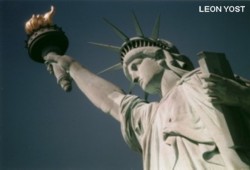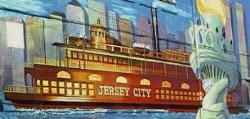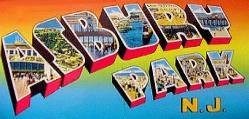Advertise Online
–
SEO - Search Engine Optimization - Search Engine Marketing - SEM
– Domains For Sale
– George Washington Bridge Bike Path and Pedestrian Walkway
– Corona Extra Beer Subliminal Advertising
– Outlaw Motorcycle Gangs
– Pet Care
–
The Tunnel Bar
–
La Cosa Nostra
–
Jersey City Free Books
Jersey City And Its Historic Sites
By Harriet Phillips Eaton
Published 1899
This Web version, edited by GET NJ
COPYRIGHT 2002
Cooking by Open Fires
Cookstoves were not introduced until about 1825 or later, the cooking being done over an open fire. In the wide fireplace was fastened at one side the "crane," a swinging iron bar, on which were hung iron pot hooks, or trammels, upon these were swung the pots and kettles for cooking. These were cleaned from soot and smoke by rubbing them in the sand. The fire was built with a large log for back log, resting on andirons, and in front and above it were piled smaller sticks and chips of wood. They used kettles of different sizes made with three iron feet, long handled frying pans ; bake kettles-broad, shallow kettles with iron covers upon which hot coals were piled; skillets, a small iron pot, holding from one to two quarts, with short handles and three iron feet, to set on a bed of coals In front of the fire to cook little messes. Meats were roasted suspended by a string before the fire and twirled from time to time, or in tin Dutch ovens, which were open towards the fire. Bread, cake, etc., were baked in the brick oven. The ordinary bread used was of rye and Indian meal. The brick ovens were prepared for baking by building a hot fire in them and when the wood was burned to coals it was shovelled out and the bread, etc., put in and the oven securely closed. A long handled shovel called a "peel " or a "slice " was used to put the things in to bake. Beside the fire-place stood shovel and tongs, and usually there hung there a bellows for blowing up the fire when low, and a turkey's wing to brush up the hearth. The first stoves used were the Franklin and many of those used in Bergen were cast by Martin Ryerson at Pompton, N. J. Coal was not used for fuel until about 1826, and at first in grates only.
The killing of their own beeves and pork was practiced by the farmers of Bergen and Communipaw as late or later than 1840. They lived almost entirely upon the produce of their farms. In November they killed and laid up their year's supply of meat. The skins of the beeves were sent to the tanner who cured them for the half ; from their share the boots and shoes for the family were made by a shoemaker who came to the house to work. This custom was kept up until 1825.
In the early days there were large tracts of white cedar along the western slope of Bergen Hill, on the old swamp road to Belleville which led from the Newark Turnpike and near Sikakes. From this cedar the farmers had casks made in which to keep their salted meats. Fresh meats, sausages, in immense quantities, head-cheese, and roellachoje (a pickled preparation of beef tongue and tripe) were kept in a cool garret.
The
first butcher in Jersey City was John W. Holmes, who started about 1814; he was succeeded in 1816 by Henry Drayton, who came to Jersey City from Somersetshire, England, but city ways and conveniences did not reach Bergen and Communipaw for many years later. It is said that the first huckster known in Jersey City was a character called "High, Low, Jack," who, in the '60's, began to go about from house to house selling clams and huckleberries. His cries were a constant amusement to the children, who used to follow him in crowds.
 The Statue of Liberty, Ellis Island, and The Central Railroad Terminal
The Statue of Liberty, Ellis Island, and The Central Railroad Terminal
Visit Liberty State Park!














